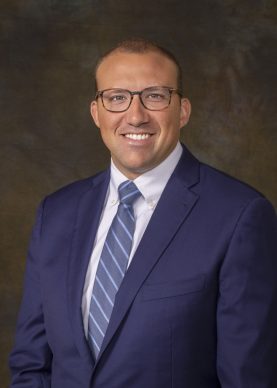Diagnosis and Treatment of Sciatica in Wake County

What is Sciatica?
Sciatica describes symptoms of leg pain and possible tingling, numbness, or weakness that travel from the lower back down the sciatic nerve in the back of the leg. Sciatica is often a result of a pinched nerve from a herniated disc or other conditions like degenerative disc disease, spinal stenosis, or spondylolisthesis.

What Causes Sciatica?
Sciatica is most commonly caused by a herniated disc, which can be a result of general wear and tear due to aging, or any sudden pressure on the discs that cushion the bones (vertebrae) of the lower spine. This condition and its symptoms are more common in those between the ages of 30 and 50.
Symptoms of Sciatica
Sciatica may feel like a bad leg cramp, with pain that is sharp (“knife-like”), or electrical. The cramp can last for weeks before it goes away. You may have pain, especially when you move, sneeze, or cough. You may also have weakness, “pins and needles” numbness, or a burning or tingling sensation down your leg.
How is Sciatica Diagnosed?
When diagnosing sciatica, your healthcare provider will want to examine your muscle strength and ability to walk. Your doctor may ask you to stand on your toes or heels and try to walk forward. They may also ask you to rise from a crouched or squatting position, or lift your legs while lying down. A person suffering from sciatica will usually experience some sort of pain when performing these movements. If you are experiencing severe pain lasting for multiple weeks, a doctor may test for sciatica using an X-ray, MRI, CT scan, or electromyography (EMG).

Treatment for Sciatica in Wake County
According to the American Academy of Orthopaedic Surgeons, approximately 80 to 90 percent of patients with sciatica get better over time without surgery, typically within several weeks. Nonsurgical treatment is aimed at helping you manage your pain without long-term use of medications. Nonsurgical treatment methods for sciatica include:
- Heat or ice
- Non-steroidal anti-inflammatory drugs such as ibuprofen, aspirin, or muscle relaxants.
- Physical therapy or at-home exercises and stretching
- Cortisone injections
- Epidural steroid injections
Do not remain in bed, as too much rest may cause other parts of the body to feel discomfort. Find positions that are comfortable, but be as active as possible. Motion helps to reduce inflammation.
You may need surgery if you still have disabling leg pain after 3 months of nonsurgical treatment for sciatica. During the surgical procedure, which is called a laminotomy with discectomy, the herniated disc may be removed to stop it from pressing on your nerve. The surgery is performed under local, spinal, or general anesthesia and is very successful at relieving pain, particularly if most of the pain is in your leg.

Sciatica Recovery Time
Motion, exercise, and stretching are important for helping to strengthen your back. It is crucial to stay active while being sure to limit bending or twisting. In most cases, patients are able to resume normal lifestyle activities fairly quickly.
What Can I Do to Prevent Sciatica?
Sciatica cannot always be avoided, however, there are some preventative measures you can take to reduce your risk. Exercising regularly is very important in order to keep your back strong. Working the muscles in the abdomen and lower back specifically is a great way to prevent sciatica. Another way to reduce your risk of sciatica is to maintain good posture. When sitting, make sure you have good lower back support and armrests so your back is not straining to feel comfortable. Using a pillow or rolled towel at the small of the back when sitting can also help keep its normal curve.

Neck and Back Pain Treatment at Raleigh Orthopaedic
Your well-being is important to us. Raleigh Orthopaedic is Wake County’s oldest and most experienced orthopedic practice, having served the Triangle and surrounding regions of central North Carolina since 1919. Book online or call us to schedule an appointment with one of our orthopedic specialists. If your injury or condition is recent, you can walk right into one of our Raleigh Orthopaedic Urgent Care locations for immediate care. For rehabilitation and physical therapy, no referral is needed to see one of our physical therapists.

